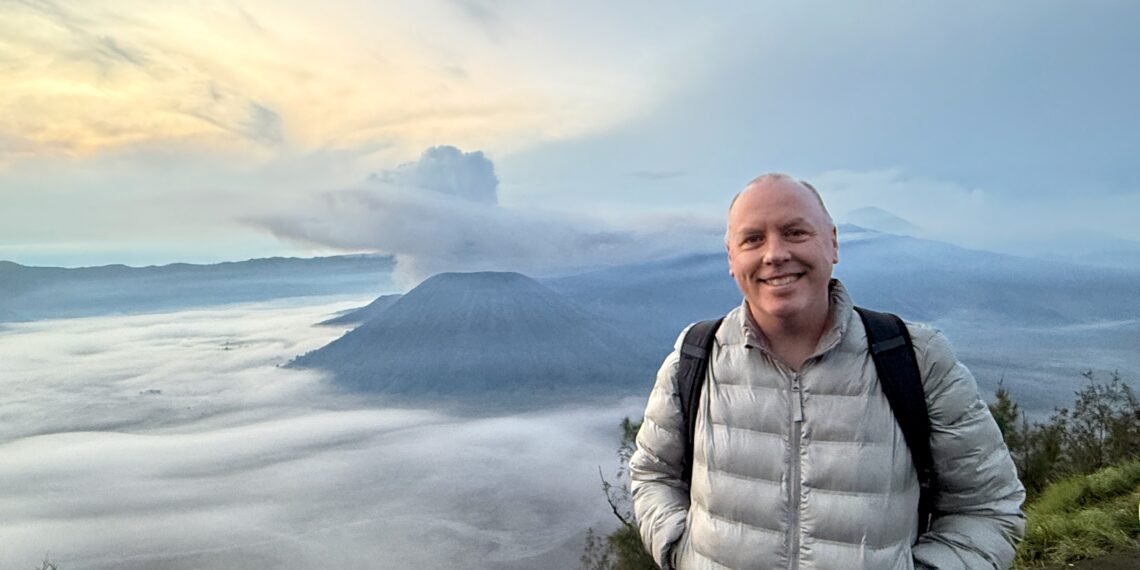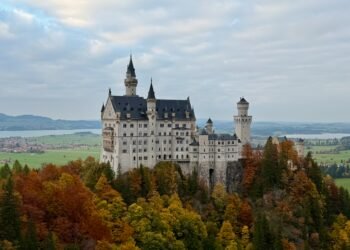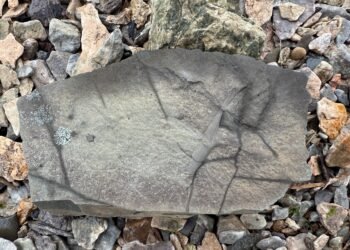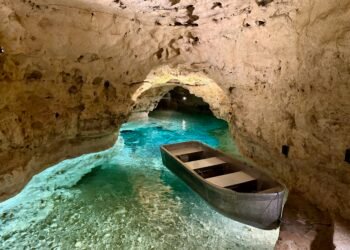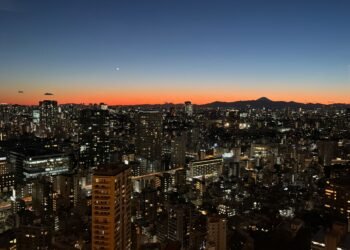The Mount Bromo volcano, one of Indonesia’s most iconic active peaks, is a marvel of geology and raw beauty. Rising from the vast Tengger Caldera, it offers an unforgettable mix of adventure and science – from the fiery roar of its crater to the ash-strewn plains below. In this article, I share my journey to Mount Bromo, the science behind this volcanic wonder, and tips for those who hope to follow in my footsteps.
The allure of an active volcano is irresistible — raw, untamed power lying just beneath the Earth’s surface, a reminder of our planet’s volatile nature. For years, the Mount Bromo volcano in Indonesia had been at the top of my must-visit list.
As part of the Pacific Ring of Fire, Bromo represents not just a breathtaking natural wonder, but also a window into the dynamic processes shaping our world. My journey to this iconic volcano was as much about adventure as it was about understanding the forces behind its formation, its fiery temperament, and its role in the larger geological story of Earth.
1 Quick Facts About the Mount Bromo Volcano
Before we delve into the history, science, and eruptions of the Mount Bromo volcano, here are some quick facts to give you an overview of this iconic and active volcano:
- Location: East Java, Indonesia
- Height: 2,329 meters (7,641 feet) above sea level
- Volcano Type: Stratovolcano (part of the Tengger Caldera)
- Last Major Eruption: 2016, with ongoing smaller eruptions since
- Formation: Part of the Pacific Ring of Fire, formed by the subduction of the Indo-Australian Plate beneath the Eurasian Plate
- Name Origin: Derived from “Brahma,” the Hindu god of creation
- Nearby Attractions: Mount Batok, Semeru Volcano (the highest mountain in Java), and Bromo Tengger Semeru National Park
- Significance: Sacred site for the Tenggerese people, who perform annual ceremonies to honor the volcano’s spirits
2 The Journey Begins: Into the Heart of Java
The adventure began in Malang, a city steeped in Javanese charm. The air buzzed with the energy of travelers and locals alike, but as the clock struck midnight, my focus shifted to a more pressing matter: joining a sunrise tour to Mount Bromo. The Pacific Ring of Fire was calling, and I was ready to answer.
The Ring of Fire, a 40,000-kilometer-long horseshoe of tectonic activity, is responsible for 75% of the world’s volcanoes and 90% of its earthquakes. Mount Bromo is one of the hundreds of volcanoes formed by the collision of the Indo-Australian Plate and the Eurasian Plate – a process that forces magma to the surface, creating fiery peaks that punctuate the Indonesian landscape.
Our journey began with a 45-minute ride through the sleepy outskirts of Malang to a meeting point where we transferred to rugged, four-wheel-drive jeeps. These vehicles are a necessity in the harsh terrain of Bromo Tengger Semeru National Park, a protected area that spans over 800 square kilometers. Over cups of strong, aromatic Javanese coffee, our small group huddled in anticipation of what lay ahead.
3 Riding Through the Night: A Jeep Adventure
Bundled in a light down jacket to ward off the January chill at high elevation, I climbed into the back of the jeep with a small group of fellow adventurers. The vehicle roared to life, and we plunged into the night. The ride was rough, the jeep lurching and bouncing as it navigated rocky paths and sandy trails. Above us, the stars burned brightly, unimpeded by city lights – a celestial canopy over an already surreal journey.

The 1.5-hour drive to the basecamp felt like an expedition into another world. Along the way, our guide explained that the volcanic soil in the region is both a blessing and a curse. While fertile, allowing agriculture to flourish, it also serves as a stark reminder of the volcano’s destructive power. The Mount Bromo volcano’s last major eruption in 2016 spewed ash over surrounding villages, disrupting lives and livelihoods.
4 The Magic of Dawn: Sunrise at Bukit Cinta
By 4:45 am, we reached Bukit Cinta View Point, shivering but eager to witness the sunrise. As the first light crept over the horizon, the Tengger Caldera slowly revealed itself, and gasps of wonder rippled through the group. The Mount Bromo volcano stood in the center of the vast caldera, a plume of smoke rising from its crater like a dragon exhaling after a deep sleep. This stratovolcano, like Mount Vesuvius in Italy, is a stark reminder of the raw power of Earth’s tectonic forces.
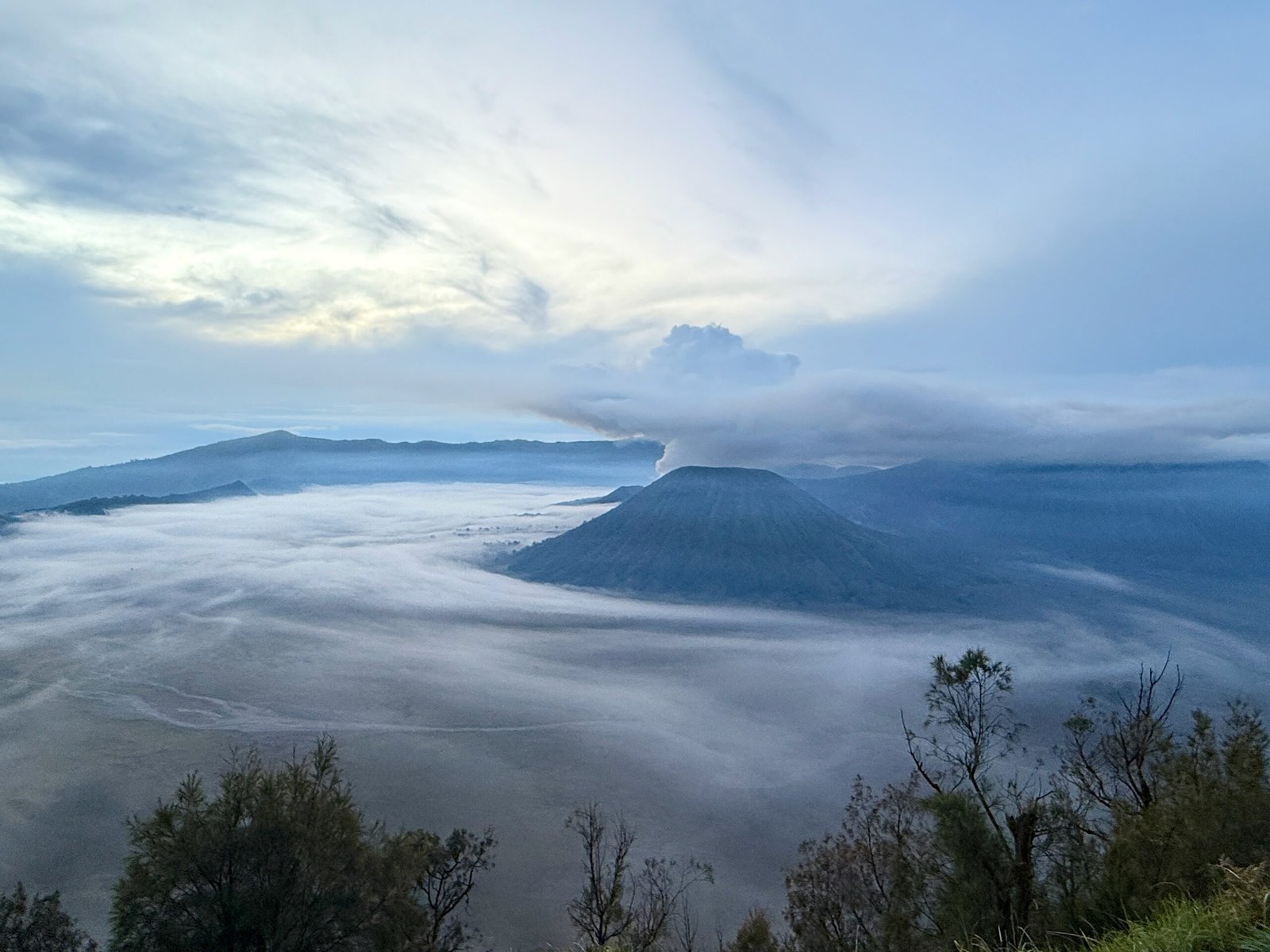
This view wasn’t just breathtaking; it was scientifically profound. The Tengger Caldera, at nearly 10 kilometers wide, was formed thousands of years ago during a massive eruption that caused the ground to collapse into the emptied magma chamber. This caldera now houses several smaller volcanic cones, including Bromo and the dormant Mount Batok.

As the sunlight illuminated the ash-covered landscape, I couldn’t help but marvel at how these features were sculpted over millennia. Volcanic cones like the Mount Bromo volcano form through successive eruptions, layering lava, ash, and rock. Their steep sides and volatile activity make them some of the most dangerous volcanoes on Earth – a fitting reminder that beauty and peril often go hand in hand.
5 The Ashen Plains: A Lunar Landscape
After the sunrise, we descended to the Tengger Caldera floor, a barren expanse of volcanic ash stretching in every direction. This terrain reminded me of another volcanic giant: Hawaii’s Mauna Kea, the tallest mountain on Earth when measured from its base beneath the ocean. Unlike Bromo, Mauna Kea is a shield volcano, known for its broad, gentle slopes formed by low-viscosity lava flows.

Volcanic ash, I learned, is not just dust – it’s a mixture of pulverized rock, glass shards, and minerals created during eruptions. While dangerous when inhaled or when it blankets infrastructure, ash also rejuvenates the soil, making volcanic regions some of the most fertile on Earth. This dual nature of destruction and renewal is part of what makes volcanoes so fascinating.

6 A Twist in the Journey: Breaking Away
As the tour group voted to focus on Instagram-worthy photo spots, I felt a pang of disappointment. I had come to peer into the heart of the dragon, to experience the Mount Bromo volcano’s caldera up close. Determined not to let this opportunity slip away, I arranged with a jeep driver to take me back to the base of the Mount Bromo volcano, a short ride away, to the area near Pura Luhur Poten.

At the base, Pura Luhur Poten stood in solemn contrast to the raw forces around it. Built of black volcanic stone, the temple serves as a spiritual anchor for the Tenggerese people, who hold annual rituals to honor the volcano’s power. The juxtaposition of spirituality and geology was striking – a reminder of how deeply intertwined human cultures are with the forces of nature.
But time was tight – I only had two hours before I needed to regroup with the tour. Knowing the walk to the caldera rim would take at least 30 minutes, I acted quickly. I hired a horse to carry me across the volcanic plain to the temple, saving precious time and energy for the climb itself. From there, I ascended the steep staircase leading to the rim. Each step was coated in volcanic dust, but my excitement carried me upward. At last, I reached the summit, standing on the edge of the caldera.
7 The Mount Bromo Volcano Caldera: Peering into the Heart of the Dragon
At over 2,300 metres (7,545 feet) above sea level, the air was thinner, and every breath felt like an effort. Yet all fatigue vanished the moment I looked down. Before me yawned the Mount Bromo volcano’s crater – a vast, steaming maw that rumbled with a near-constant roar. It was a sight that will stay with me forever.

The sound was deafening, like jet engines at full throttle. The smell of sulfur hung heavy in the air, a pungent reminder of the volatile gases being released from the magma below. The Mount Bromo volcano’s eruptions are Strombolian in nature, characterized by bursts of gas and magma that create dramatic but localized explosions. These eruptions occur when gas trapped in molten rock escapes violently, sending ash and lava into the air.
“Standing on the rim of the Mount Bromo volcano’s roaring caldera, I felt the Earth’s raw power – a breathtaking reminder of the forces shaping our planet.”
Peering into the crater, I could see the layers of ash and lava that had built up over centuries. Each layer was a chapter in the volcano’s history, a testament to the cycles of eruption and dormancy that define its existence. Standing there, I felt a mix of awe and humility – this was Earth’s raw power on full display.

8 Racing Through the Caldera: A Motorcycle Adventure
With only one hour before I needed to rejoin the group, I descended the volcano and hopped on a motorcycle for a thrilling ride through the caldera. The experience was utterly different from the jeep ride – on the back of a motorcycle, every detail came to life. The ash kicked up in swirling clouds, the wind rushed past, and the towering walls of the Tengger Caldera seemed to close in around me.
The scale of the caldera was overwhelming. Scientists estimate that the eruption that formed it was one of the largest in human history, ejecting so much material that it likely altered the global climate. Riding through this ancient, ash-strewn basin, I felt as though I were traveling back in time.
9 The Journey Back: Reflection and Gratitude
Rejoining the group, I felt a deep sense of satisfaction. The rough ride back to Malang gave me time to reflect on the day’s adventures. The Mount Bromo volcano had offered more than just stunning views; it had deepened my understanding of the Earth’s dynamic processes and the delicate balance between destruction and creation.
10 Travel Tips for Visiting the Mount Bromo Volcano
- Best Time to Visit: The dry season (April to October) is ideal for clear views of the sunrise and easier trekking. While January is in the wet season, it’s still possible to visit with a bit of luck and preparation.
- Getting There: The closest major cities are Malang and Surabaya. Malang offers a more scenic and less crowded route. Arrange a tour in advance, especially if you want to join a sunrise trip.
- What to Pack:
- Clothing: Layers are key! Temperatures can dip to 10°C at dawn, so bring a light jacket, gloves, and a hat.
- Footwear: Sturdy, closed-toe shoes for trekking. The volcanic ash can be slippery.
- Essentials: Sunglasses, sunscreen, a mask (to filter ash), and a flashlight.
- Where to Stay: Options range from budget guesthouses in Cemoro Lawang (closest to the volcano) to more comfortable accommodations in Malang.
- Local Etiquette: Be respectful of local customs, especially at the Hindu temple near the caldera. Avoid walking on sacred areas.
11 Pro Tips for the Science Traveler
- Understand the Geology: The Mount Bromo volcano is a stratovolcano formed over thousands of years. Research its role in the Pacific Ring of Fire to appreciate the tectonic forces at work.
- Explore Beyond the Obvious: While the sunrise view is iconic, don’t miss the chance to hike to the caldera’s rim or explore the Tengger Caldera’s walls on foot or by motorcycle.
- Come Prepared with Questions: Engage with local guides to learn more about the region’s volcanic activity, ecosystem, and cultural ties to the volcano.
- Bring Science Tools: A portable GPS device or geology hammer can make the experience more interactive for budding volcanologists. Use a journal to note observations.
- Expand Your Knowledge: Every volcano tells a different story. For a contrasting perspective on volcanoes, read about Mount Vesuvius, whose eruption famously buried Pompeii, or Mauna Kea, a dormant giant revered by scientists and Hawaiians alike.
- Protect Yourself: Volcanic gases can be harmful. Consider carrying a N95 mask to filter out sulfur dioxide and other emissions, especially when near the crater.
- Contribute to Science: Consider joining a citizen science project or submitting observations about the Mount Bromo volcano to platforms like the Global Volcanism Program.
12 Conclusion: Lessons from the Mount Bromo Volcano
The Mount Bromo volcano is more than just a tourist attraction – it’s a living, breathing laboratory for understanding our planet. Its formation within the Pacific Ring of Fire, its frequent eruptions, and its impact on the local ecosystem all tell a story of resilience and renewal.
For those who crave both adventure and knowledge, the Mount Bromo volcano is a destination like no other. It reminds us that the Earth is not a static backdrop but a dynamic, ever-changing force that shapes our lives in ways we often take for granted. Standing on the rim of that roaring volcano, I felt a profound connection to the planet – a reminder of both its power and its fragility.

13 More Volcano Adventures
If you enjoyed this journey to the Mount Bromo volcano, explore these other science travel stories from around the world’s most iconic volcanic landscapes:

